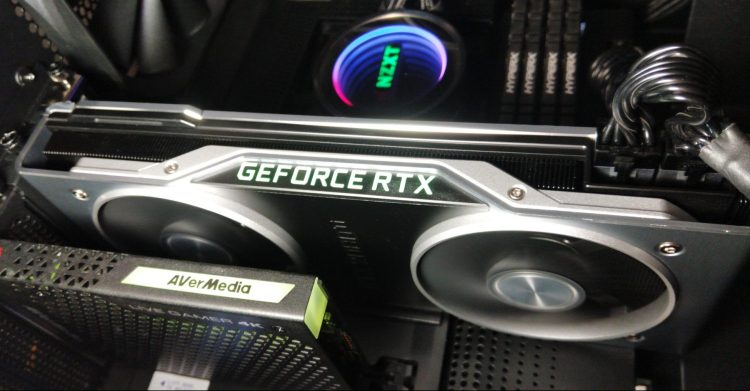Nvidia still hasn’t officially revealed the GeForce RTX 2060 graphics card. But supposed specs have begun leaking, and the company is likely going to reveal it at the upcoming Consumer Electronics Show. But while Nvidia boss Jensen Huang may present the RTX 2060 as a single product launch, it may end up a lot more confusing than that.
The RTX 2060 is going to come in six different configurations from Nvidia, according to a Eurasian Economic Commission (EEC) filling by hardware company Gigabyte. The card comes with GDDR6 or GDDR5 memory, and you can get either of those with 3GB, 4GB, or 6GB of that video RAM. It’s possible that these details could change — for example, Nvidia may use GDDR5X instead of the slightly slower GDDR5. But regardless, the company is going to send out a wide range of RTX 2060 chips to its partners.
But that’s only the start of the confusion. While Nvidia may have six variations, companies like Gigabyte and EVGA are going to have multiple versions of each of those cards. According to Gigabyte’s EEC filing, it is preparing 39 different RTX 2060 SKUs. These include the 6GB GDDR6 Aorus Xtreme, 4GB GDDR6 Aorus Xtreme, and 3GB GDDR6 Aorus Xtreme.
It’s worth noting that Gigabyte could be covering all of its bases, and it may not end up ever shipping all of these cards. But even if it does, I’m not sure most people will notice.
June 5th: The AI Audit in NYC
Join us next week in NYC to engage with top executive leaders, delving into strategies for auditing AI models to ensure fairness, optimal performance, and ethical compliance across diverse organizations. Secure your attendance for this exclusive invite-only event.
The confusion may not matter
I have no idea what the performance gap between an RTX 2060 GDDR5 3GB and GDDR6 6GB is going to look like. I would bet we can expect something in the 10-percent range. That may not seem like much, but it definitely is these days. The gap between a GTX 1080 and GTX 1070 is about 20 percent on average.
At the same time, I’m not sure that this confusion is a real concern for a couple of reasons.
Nvidia has done this before
Most PC hardware enthusiasts are content with the last generation of graphics cards. No one really talks about the confusion of the GTX 1060, for example, but that card also had multiple configurations as well.
You can get a GTX 1060 with 3GB, 5GB, or 6GB of DDR5 memory. Later, Nvidia also introduced a variation with GDDR5X memory. The company even tweaked the core specs of the chip itself for even more GTX 1060 configurations. You could see some wild performance swings between these different options, but even then — I wouldn’t call the GTX 1060 confusing.
Why it’s less intimidating than it seems
The reason the story around the 1060 isn’t all about its multiple versions is because of how people shop for these products. For example, no one is looking at a shelf with 39 different Gigabyte SKUs when they’re building a PC.
Hardware enthusiasts are so detail-oriented and loud, that they almost always force the best deals to surface to the top. So if you go to a site like PCPartPicker.com and know that you want an RTX 2060, you can safely assume that the crowd has pushed the best ones to the top. You’re probably going to pick between two or three options.
Partner frustration
This fragmentation of the RTX 2060 is a problem for Nvidia’s partners. Making 39 SKUs for one product seems like a hassle. But it’s not something that Gigabyte and EVGA cannot handle. They are pros at breaking up products into their own variants with custom cooling and overclocks.
With that experience, I would expect Nvidia’s partners to begin focusing on their best-selling configurations in the months after the 2060’s launch. The problem is that Gigabyte doesn’t know today what the crowd on Reddit and PCPartPicker are going to declare as the best value tomorrow. Once enthusiasts and reviewers sort that out, consumers will favor those products, and then Gigabyte can shift its production to favor those as well.
So yeah — it’s weird that Nvidia is splitting up the RTX 2060 in so many different ways. But it’s one of things that is only a problem when you look at it. Most people are never even going to notice.


